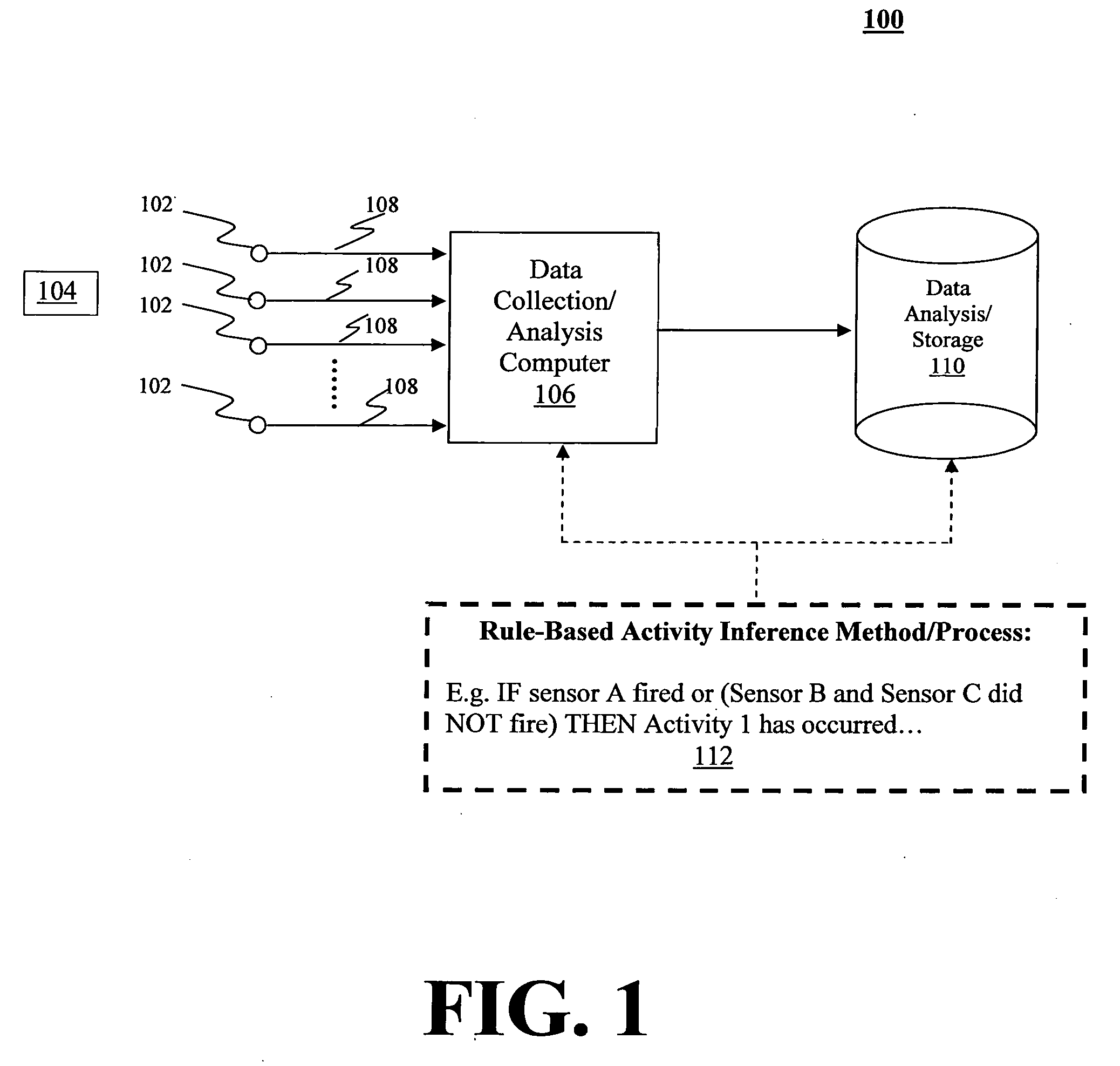System and method for the inference of activities of daily living and instrumental activities of daily living automatically
a technology of inference and activities, applied in the field of system and method for inference of activities of daily living and instrumental activities of daily living automatically, can solve the problems of one-time measurement of function not allowing for assessment of variability of functional performance, one-time assessment of function not allowing for assessment of change, etc., to achieve the effect of facilitating detection
- Summary
- Abstract
- Description
- Claims
- Application Information
AI Technical Summary
Benefits of technology
Problems solved by technology
Method used
Image
Examples
Embodiment Construction
[0015] The various embodiments of the present invention provide a method and system to, but not limited thereto, automatically infer answers for all of the ADL questions and the first four questions of the IADL in the home. In an embodiment the present invention method automatically infers answers to all ADL question, and thus will be dubbed AADL for Automatic ADL. This method may use a motion detector in each room, humidity sensors, pressure mats, and electronic noses (odor detecting sensors).
[0016] Similarly, a second method of the present invention automatically infers answers to four of the IADL question. The fifth question, regarding the individual's ability to handle money and financial transactions without help, could be answered. However, it should be appreciated that it is a sensitive and a confidential matter that may cause problems of guardianship and the like; hence, the answer to this question is best asked directly, rather than inferred automatically, if it is relevan...
PUM
 Login to View More
Login to View More Abstract
Description
Claims
Application Information
 Login to View More
Login to View More - R&D
- Intellectual Property
- Life Sciences
- Materials
- Tech Scout
- Unparalleled Data Quality
- Higher Quality Content
- 60% Fewer Hallucinations
Browse by: Latest US Patents, China's latest patents, Technical Efficacy Thesaurus, Application Domain, Technology Topic, Popular Technical Reports.
© 2025 PatSnap. All rights reserved.Legal|Privacy policy|Modern Slavery Act Transparency Statement|Sitemap|About US| Contact US: help@patsnap.com



